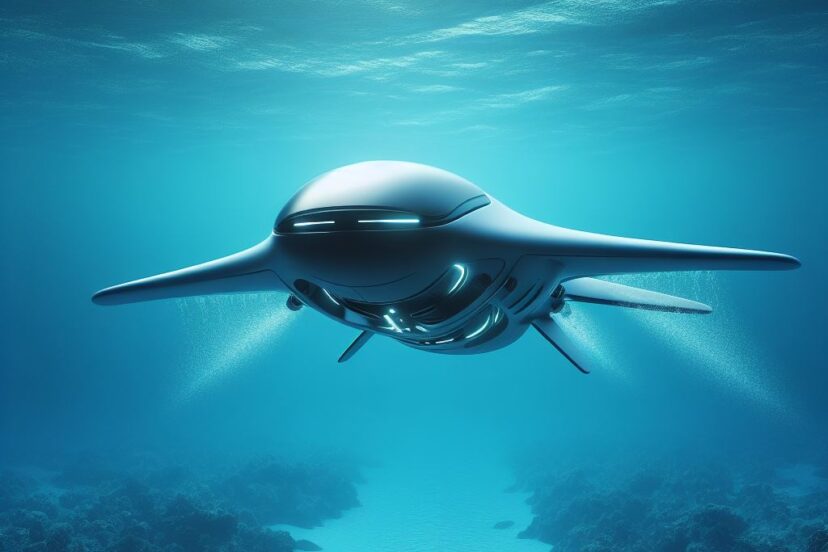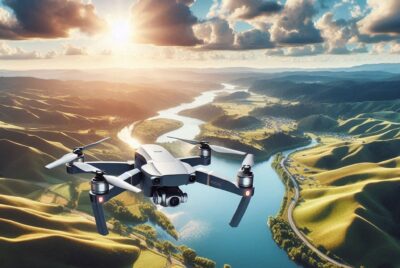Best Underwater Drone: Explore Depths with Precision
*We may earn a commission for purchases made using our links. Please see our disclosure to learn more.
Best Underwater Drone Models: Expert Recommendations
Underwater drones have opened up an avenue to the depths that was once reserved for professional divers and expensive equipment. Enthusiasts, scientists, and videographers alike can now explore marine life, perform underwater inspections, and capture stunning footage with relative ease. These drones, also known as remotely operated vehicles (ROVs), come in a variety of forms suited to different needs. Some of the best underwater drone models are designed for deep-sea exploration and others tailored for shallow waters and coral reefs.
The best underwater drone is typically characterized by its robust design, ease of maneuverability, camera quality, depth capability, and the strength of its tether, which transmits power and data. Key features often include high-definition video capability, long battery life, and stable performance even in strong currents. The drones that stand out are those that balance these features to offer an immersive underwater experience without the need to physically dive in.
When planning to purchase an underwater drone, attention must be given to the product’s operational depth, battery life, and camera specifications. These factors often dictate the usefulness and versatility of the drone in various underwater conditions. Moreover, an effective underwater drone should also have a user-friendly interface, both for piloting and for reviewing the footage captured.
I’ve put considerable time into researching and testing various underwater drones to determine which stands out as the optimal tool for different underwater ventures. From sleek, agile models adept at capturing marine life in motion, to sturdy drones capable of withstanding the pressures of deep water and dark environments, my thorough examination aims to help prospective buyers make an informed decision.
Best Underwater Drone Selections
In my extensive search for the best underwater drones, I’ve pinpointed options that excel in performance, durability, and user-friendliness. These drones offer a glimpse into the depths, capturing stunning imagery and providing valuable data for professionals and hobbyists alike. My selection reflects a range of features and price points to help you choose the perfect companion for your aquatic adventures.
FIFISH V-EVO Experience
I believe the FIFISH V-EVO is a solid choice for underwater exploration, offering an enriching experience with its cutting-edge features.
Pros
- Exceptional 4K video quality even in low light
- Superior maneuverability with 360° movement
- VR control offers an immersive piloting experience
Cons
- High price point may not suit all budgets
- Learning curve for mastering controls
- Certain accessories may be sold separately
After a recent dive with the FIFISH V-EVO, the visual clarity captured by its 4K camera absolutely blew me away. The colors of the coral and marine life popped, even in areas where light didn’t penetrate well, thanks to those ultra-bright LEDs.
Maneuvering this drone through the twists and turns of an underwater shipwreck was a breeze. Its hydrodynamic design sliced through currents effortlessly, and the 360° omnidirectional mobility was like having an unrestricted swim in the ocean.
Using the VR control feature took my experience to a new level. By just moving my head, I could navigate the drone in a very intuitive way—it felt like I was truly part of the underwater environment, not just an observer.
The price did make me hesitate at first—and truth be told, some may find the investment a bit steep. There’s a bit of a learning curve too; it took me a couple of tries to get the hang of the controls, but the subsequent diving sessions were smooth sailing.
Lastly, be aware that you might need to purchase additional accessories to maximize your use of the V-EVO, which could add to the overall cost.
Chasing Gladius Mini
If you’re intrigued by underwater exploration, the Chasing Gladius Mini is a compact and capable drone that delivers an exhilarating marine experience.
Pros
- Maneuverability akin to a video game controller provides a user-friendly experience.
- A lightweight, portable design makes transportation hassle-free.
- The ability to stream live footage and control with both a remote and an app adds versatility.
Cons
- At a 3.6-star rating, some users have reported missing accessories upon purchase.
- Without the previously included freshwater ballast, there can be sinking issues reported.
- The package might exclude the backpack which is mentioned as included.
Diving into the ocean with the Gladius Mini, I found myself captivated by its smooth navigation. Its game-like controls were intuitive, making it easy to glide through the water. The ability of the drone to tilt and lock its depth was particularly impressive, facilitating my focus on specific areas of interest without constant readjustment. Furthermore, hovering over coral reefs and spying on the vibrant sea life below felt like I had unlocked a secret level in a game, but this time, the screen was filled with the vivid scenes of the natural underwater world.
The drone’s lightness and compact size are undeniably convenient. Transporting it to different dive spots was a breeze, and it didn’t burden me with excessive weight or bulkiness. I appreciate how this drone invites spontaneity; if I come across a promising diving location, I can easily take the Gladius Mini along without a second thought.
Despite the positives, it’s worth noting some users have encountered incomplete packages, which is a slight concern. While I personally didn’t face these issues, I would advise checking the contents upon arrival to ensure everything is as expected. Furthermore, the feedback about the drone’s tendency to sink warrants extra caution for prospective buyers who may need to consider additional buoyancy solutions.
FIFISH V6 Expert
I just had the chance to explore the depths with the FIFISH V6 Expert M200A, and it’s clear to me that enthusiasts and professionals alike should consider this drone for its precision and capabilities.
Pros
- Offers a seamless six-hour dive experience
- Captures stunning 4K visuals with impressive lighting
- Accommodates over 20 professional attachments for specialized tasks
Cons
- Has a learning curve for solo operators
- The initial investment might be steep for hobbyists
- Requires additional personnel for optimal operation
After spending some quality time with the FIFISH V6 Expert, I’m struck by the freedom its omnidirectional movement provides. Darting through water with such control mimics the movements of aquatic life. The 360-degree maneuverability is not just a fancy feature; it’s a critical asset when navigating around complex underwater structures or in tight spaces.
The drone’s camera system is a marvel, ensuring that no detail is missed during underwater expeditions. The dimly lit underwater world comes to life thanks to the pair of 6000-lumen LEDs. Moreover, the color enhancing algorithms ensure that the footage is not just clear, but also color-accurate.
However, while the drone impresses with its capabilities, it’s not something you can operate straight out of the box without some practice. There’s a bit of a learning curve, especially for someone planning to pilot it alone. Furthermore, while the drone’s price point reflects its high-end features, it might be a significant outlay if you’re a casual user.
For professional use, however, the V6 Expert is a reliable companion. Its quick plug compartment for the Micro SD card makes transferring data breezy. If your project demands long, uninterrupted dives, this drone won’t disappoint. The 660ft tether allows for extensive reach, and the compatibility with various professional tools gives it versatility for different underwater tasks.
CHASING Dory
I’d say the CHASING Dory is ideal for casual explorers and those with a budding interest in marine photography due to its simplicity and portability.
Pros
- Impressive camera quality for its size
- Highly portable and easy to carry
- User-friendly controls via the smartphone app
Cons
- Limited depth capability at only 49 feet
- The battery lasts about an hour, which might be short for some
- Tethered connection may restrict maneuverability
Exploring the ocean has never felt more accessible. The CHASING Dory’s compact size is a game-changer. It easily fits into my backpack, and I’ve taken it on numerous trips to the shore. Its vivid live-streaming capability at depths of up to 49 feet has provided me with an intimate glimpse of underwater life that I can even share on social media instantly.
Handling the Dory is a breeze; it’s like playing a video game but with the wondrous backdrop of the sea. Steering it through the water column and observing marine habitats is genuinely thrilling, and the built-in color restoration algorithm ensures that the images and videos I capture with its HD camera are nothing short of captivating.
As an underwater enthusiast, however, I appreciate every minute I can get beneath the surface. Furthermore, the one-hour battery life is ample for quick dives, but I find myself craving longer expeditions. Additionally, while the tether provides a reliable link to my device, there are moments when I wish for the freedom of a wireless experience. Despite these limitations, the Dory is a memorable addition to my aquatic adventures.
Best Underwater Drone Buying Guide
Understanding Your Needs
Before purchasing an underwater drone, I always assess my needs. Am I exploring vast oceanic depths or inspecting underwater structures? The intended use dictates the features I look for, such as depth capability, battery life, and camera quality.
Key Features to Consider of the Best Underwater Drone
Depth Capability: The maximum operational depth is crucial. I ensure the drone can dive to the depths required for my exploration.
Battery Life: Long battery life is essential for extended missions. I check the drone’s battery life and whether it suits my usage patterns.
Camera Quality: Since capturing clear underwater images is often a priority, I prioritize drones with high-resolution cameras that offer stable footage and good low-light performance.
Maneuverability: Agile movement and stable hovering are important. I examine the control system and verify that the drone can navigate the underwater terrain I intend to explore.
Durability: The underwater environment can be harsh. I make sure the drone is built with corrosion-resistant materials and has a robust design to withstand the pressure and elements.
Compare and Contrast of the Best Underwater Drone
| Feature | Importance | Notes |
| Depth Capability | High | Essential for deep water exploration |
| Battery Life | High | Determines the length of the dive |
| Camera Quality | High | I need to ensure clarity of underwater images |
| Maneuverability | Medium | Important for specific tasks and terrains |
| Durability | High | Must withstand harsh underwater conditions |
Connectivity and Data Transfer of the Best Underwater Drone
Reliable communication with the drone is vital. I consider the data transfer options, such as Wi-Fi or a tethered connection, to ensure I can reliably control the drone and receive data. It’s also worth noting whether live streaming is possible if I need real-time monitoring.
By carefully evaluating these factors, I ensure that the underwater drone I choose will meet my requirements for successful underwater exploration and documentation.
FAQs About the Best Underwater Drone Types
In this section, I have compiled the most pertinent questions regarding underwater drones, focusing on features for professional use, effectiveness in fishing, battery life, cost, and performance in low visibility conditions.
1. What are the top features to look for in a high-quality underwater drone for professional application?
For a professional underwater drone, I prioritize features like advanced maneuverability, high-resolution cameras, robust construction for depth pressure, stable connectivity for real-time data transfer, and an array of sensors for environmental monitoring.
2. How effective are underwater drones for fishing, and what features enhance their performance in this field?
Underwater drones are quite effective for fishing; they come equipped with features like sonar technology to locate fish, bait drop capabilities, and live feed video to study marine life behavior which aids in successful fishing ventures.
3. What is the battery life and depth capability of leading underwater drones in the market?
Leading underwater drones typically offer a battery life that ranges from 2 to 4 hours and can reach depths from 100 meters to well over 500 meters, depending on the model and design specifics.
4. What are the price ranges for budget-friendly underwater drones that include a camera feature?
Budget-friendly underwater drones with a camera feature usually range from $500 to $1500. These models provide a balance between cost and functionality for hobbyists and entry-level underwater exploration.
5. How do underwater drones perform in low visibility or murky waters, and what technology do they use to navigate?
In murky waters, underwater drones rely on sonar and acoustic navigation to maintain orientation. High-quality drones use enhanced lighting and specialized cameras to capture clear images and improve navigation under challenging conditions.








